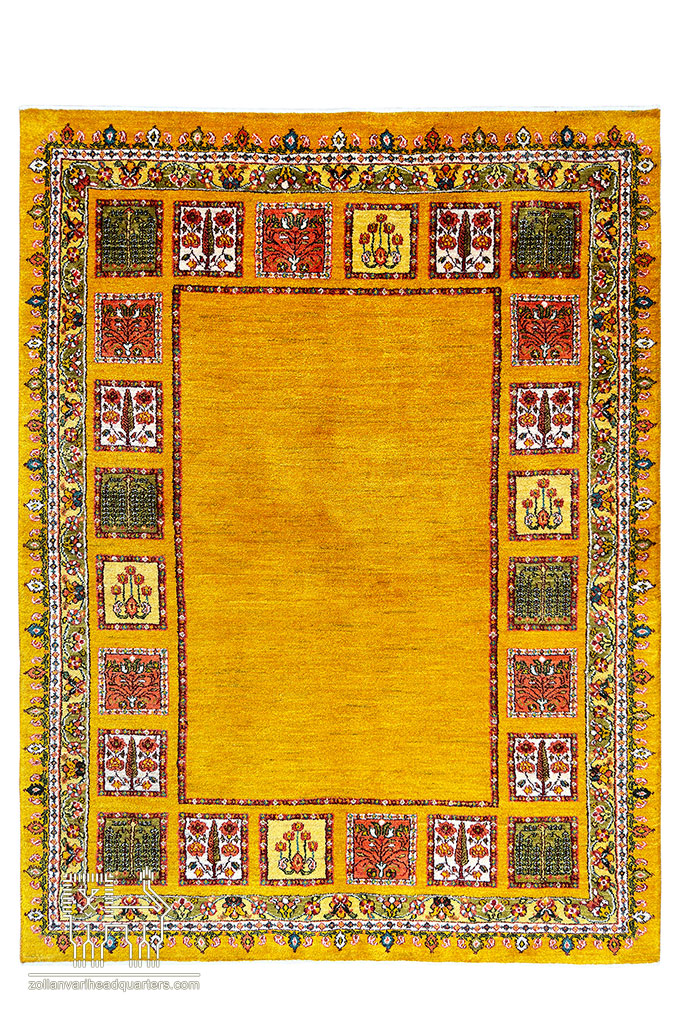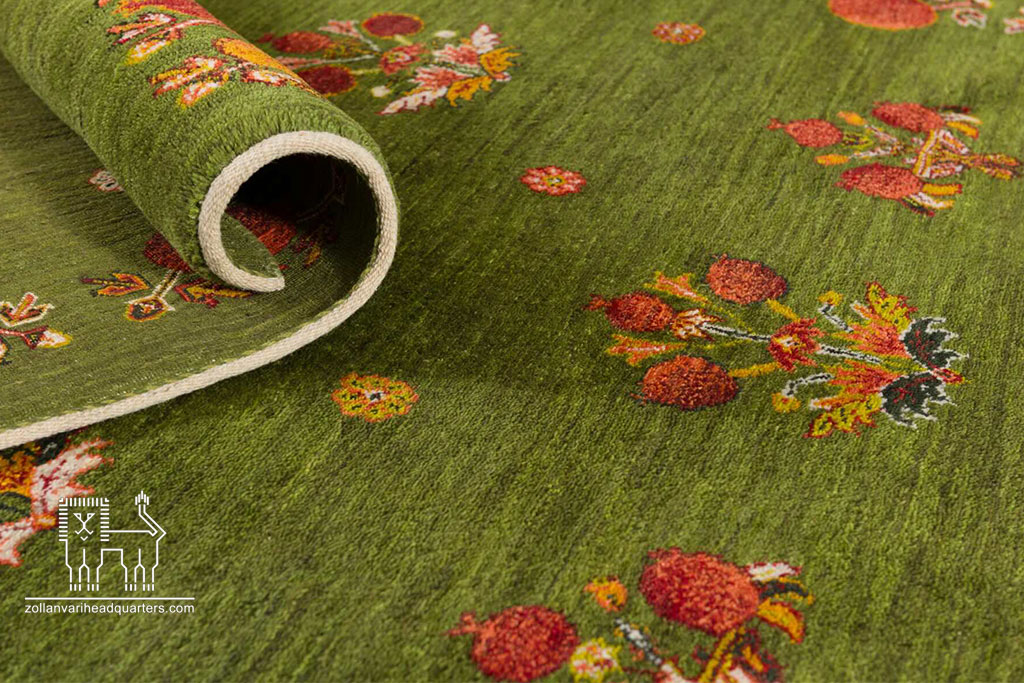Why Do Carpets Have Two-Tone and Shaded Effects?
In the world of machine-made carpets, the variety of synthetic fibers such as acrylic, polyester, filament, BCF, and synthetic silk plays a significant role in creating visual effects. These fibers not only enhance the beauty of the carpets but also have a texture that, when laid out, creates a shaded or two-tone effect. This phenomenon may cause some buyers to worry and mistakenly believe that it is a sign of poor quality or an issue with the fiber’s color. In this article on the Zollanvari website, we will explore this fascinating point and explain how this feature adds to the beauty and allure of machine-made carpets, making them unique. Join us as we delve into the amazing world of shading and highlights in carpets.
The Shaded Effect That Is a Defect in Machine-Made Carpets
The lightening effect of the carpet is particularly noticeable when the carpet has been incorrectly woven with a double pile. During the weaving, production, or finishing stages, if one part of the pile overlaps another, a light and dark effect appears on the surface. This phenomenon causes the pile threads to be pressed, ultimately leading to the appearance of a shaded effect. Therefore, shading and double-pile are recognized as a technical defect in the weaving machines and may also result from malfunctioning sizing devices. The light reflected from the surface and cross-section of the fibers creates a type of two-tone effect. The more the fibers are bent, the larger the cross-section exposed to the light, making the carpet appear lighter. In contrast, fibers in more vertical angles reveal a smaller cross-section to the light, contributing to a darker appearance of the carpet.
 Machine-made carpets
Machine-made carpets
The Arrangement of Threads in the Weaving Process: A Key Factor in Carpet Shading
In the carpet weaving process, the threads are not arranged vertically and parallel to each other; instead, they are woven at an angle. This technique ensures that when looking at the carpet, the surface of all fibers is clearly visible, giving the carpet a more vibrant and intense appearance. On the other hand, if viewed from a different angle, the body of the carpet suddenly appears more exposed, and the colors seem to fade. When placing two carpets next to each other and looking at them from different angles, you will notice that when the piles are in different directions, the carpets show a more vivid and intense color. However, when viewed from the opposite angle, you will see more of the fibers, and this will result in the colors appearing lighter. Therefore, as mentioned earlier, the shading of carpets is a completely natural phenomenon and is in no way indicative of a defect in the fibers.
Despite Shading, Which Carpet Should We Buy?
If we categorize carpets based on shading, acrylic-woven carpets are divided into two types. One of these types is called the “light” carpet, which is recently woven in Kashan, and due to its specific characteristics, it experiences shading and a two-tone effect. Interestingly, compared to other machine-made carpets, the likelihood of shading in acrylic carpets is lower. This feature is particularly noticeable in carpets made with filament and synthetic silk threads. Therefore, if shading is important to you, it is better to focus on buying acrylic carpets. Additionally, the background color of the carpet plays a crucial role in the amount of shading and two-tone effects.
Final Word
In machine-made carpets, the variety of synthetic fibers such as acrylic, polyester, and synthetic silk creates attractive visual effects and the phenomenon of shading. This effect is caused by the way the threads are woven and positioned, and may concern some buyers who mistakenly think it is a sign of poor quality. Shading becomes apparent when the pile is not correctly adjusted or if there is a flaw during the production stages. This feature enhances the beauty of the carpets and is not an indication of any defect.


Write a Comment